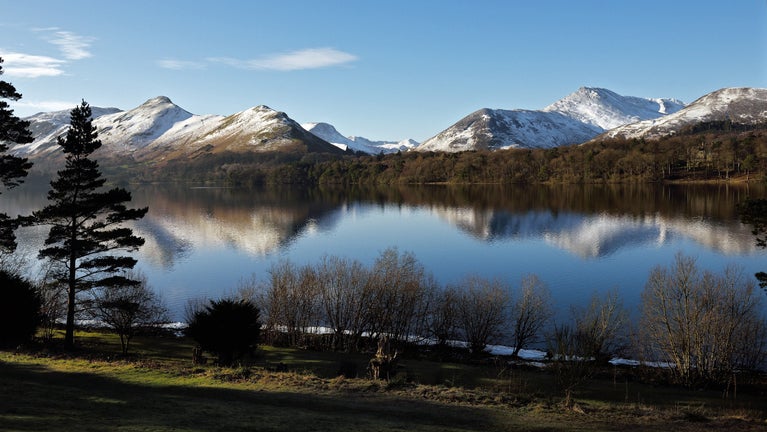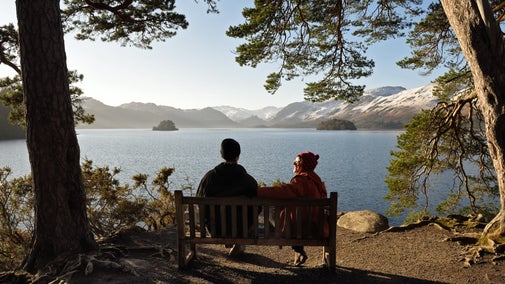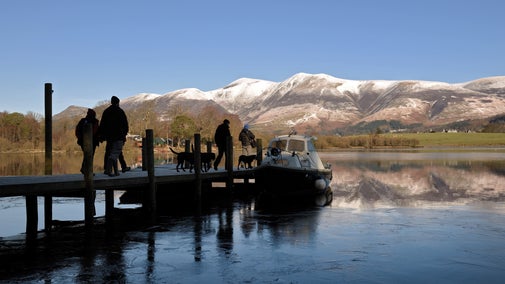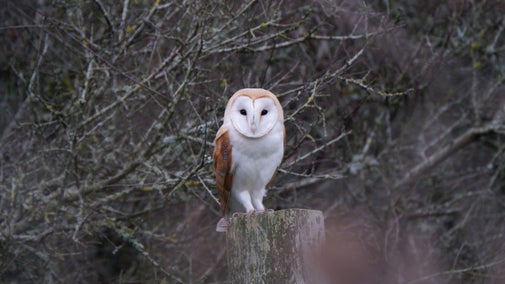
Discover more at Borrowdale and Derwent Water
Find out how to get to Borrowdale and Derwent Water, where to park, the things to see and do and more.

Derwent Island and House is an exciting element of the Borrowdale landscape. From housing a German mining colony to being the site of Pocklington's Keswick Regatta, this island has a storied past. Find out all you need to know about the history of the island and the many owners of the house here.
Due to staff shortages, we will be unable to run open days at Derwent Island this year. We hope to once again be able to welcome visitors soon.
Derwent Island is one of the Lake’s most fascinating treasures. The 18th-century house on this little wooded island makes this the only inhabited island in the Lake District.
The island is not currently open to visitors, however you can still capture beautiful glimpses of the picturesque villa when boating on the lake.

By 1781, ‘Pocklington's Island’, as he called it was crowned with a Palladian villa of five bays surmounted by a gigantic pediment. It was built by Samuel and Thomas Ladyman of Keswick, to Pocklington’s own design. Many were enraged by the starkness of this intrusion in the natural landscape. Wordsworth ridiculed it as being ‘like an astronomer's observatory, or a warren-house reared upon an eminence for the detection of depredators…’.
Derwent Water Regatta has never been a quiet affair. The first one held in 1781 by Joseph Pocklington included a sweepstake for swimming horses and an attack on Derwent Island in a mock battle. Pocklington’s regattas were all about people pitching in to create a dramatic, and slightly chaotic, spectacle.
For example, in 1789, a wooden ‘battery’ - a castellated facade for the porter’s lodge or ‘blockhouse’ was built on the island which he renamed Fort Joseph. The fortifications were used in the mock battles hosted at the Regatta. Local men armed with muskets would be organised to make a sham naval attack on the island from a fleet of rowing boats, amid the thunderous uproar of Pocklington’s six cannon, and eventually land near the blockhouse to plunder its store of roast beef and beer.
This gallery presents paintings capturing Derwent Island and its house during the late 18th century, when the estate was owned by Joseph Pocklington.

Find out how to get to Borrowdale and Derwent Water, where to park, the things to see and do and more.
Take in the views from Friar’s Crag and visit historic sculptures on a lakeside walk around Derwent Water or set off from Keswick to explore the surrounding woodlands and fells.

Discover the top things to see and do during your visit, including scenic walks, ancient woodlands, far-reaching views and famous Lakeland highlights such as the Bowder Stone

Take to the water for a spot of canoeing, paddleboarding or paddling. The islands of Derwent Water are waiting to be discovered

Discover the internationally significant ‘Atlantic oakwoods’ and Derwent Water which support a variety of rare species of plants and animals, including the red squirrel and vendace.

The Bowder Stone, Borrowdale Yews and Castlerigg stone circle have stood watching the Borrowdale valley evolve around them. Discover the history of these ancient residents.

Historic houses and buildings are full of stories, art and collections. Learn more about their past and plan your next visit.

Alongside its natural outdoor wonders the Lake District also has many inspiring houses and buildings to visit, from the impressive Allan Bank where Wordsworth once lived, to the former farmhouse of Beatrix Potter.
